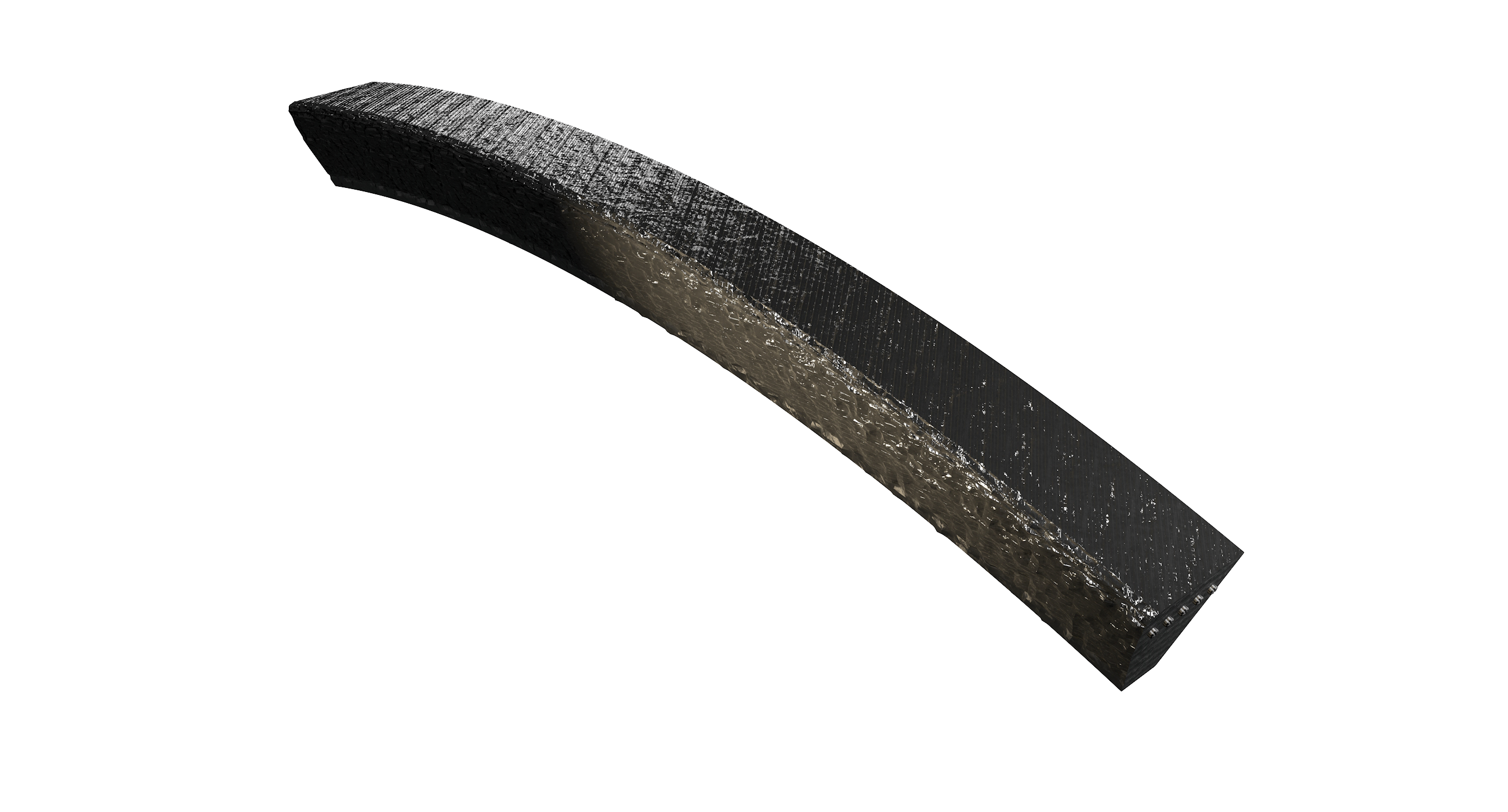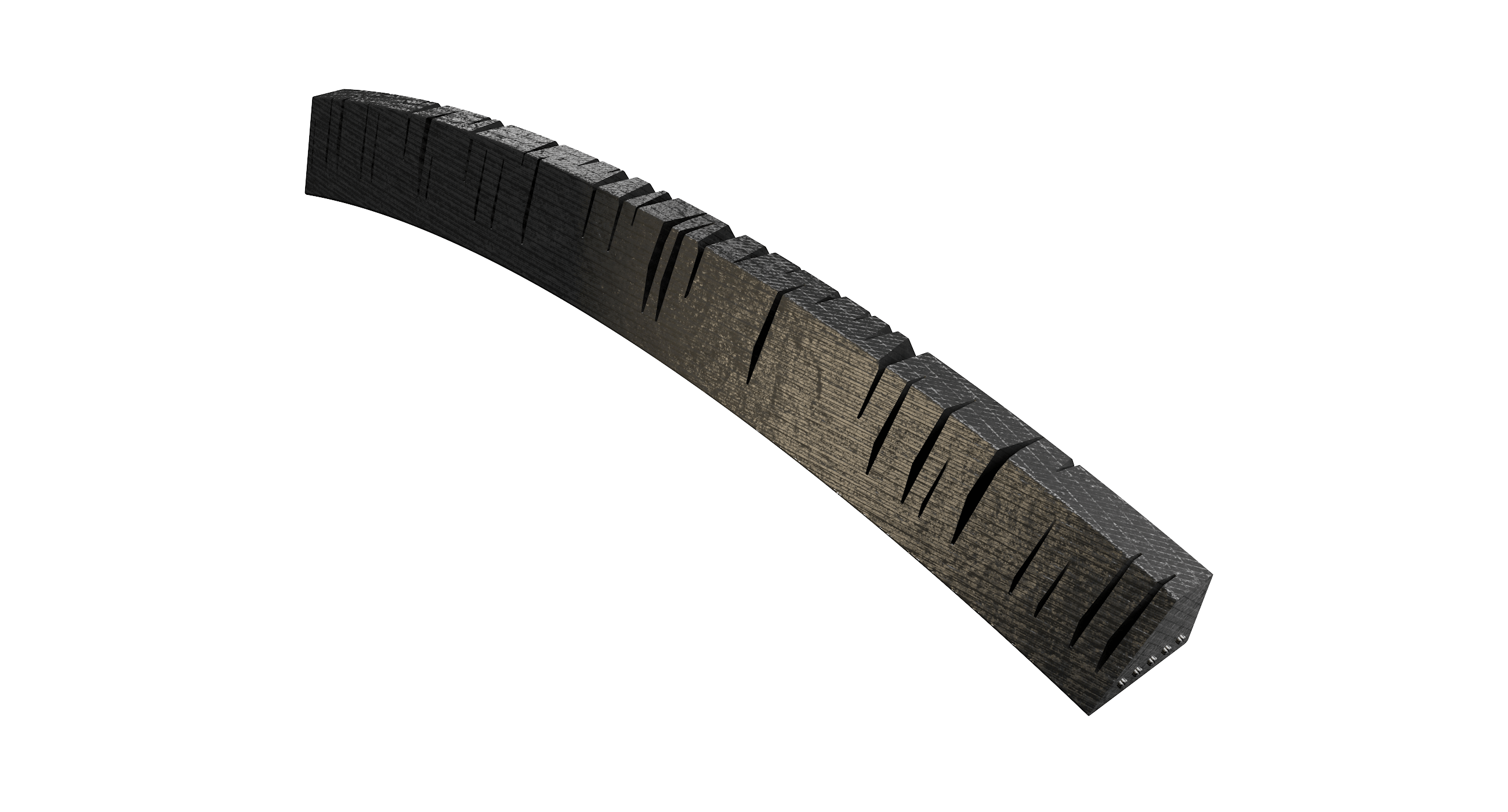Belts might not be the first topic that pops up in your mind when doing a check-up on your machine, but pre-season checks and the importance of checking and setting your belts to the correct tension should not be forgotten. Together with transmission belts expert Optibelt we explain why belts fail and how to avoid this from happening. Optibelt is an international manufacturer of high-performance belt drives with a lot of expertise on belt drives and how to prevent drive belt failure.
In this article, we look at several reasons why belts could fail, what ways there are to avoid this and the importance of checking and setting the belts correctly and doing frequent checks. But first of all, it's very important to understand the types of belt, when to use them and where to find them on the Kramp web shop. Get ready to learn all you need to know about different types of belts (Flat Belts, Fan Belts, Timing Belts and V-Belts) and profiles, how to measure them correctly and which type to choose in this video.
Please note: Always ensure that every machine component has stopped moving, cannot be moved, and is in a safety position before you start the maintenance. Make sure you always consult the (safety) instructions from the manufacturer.
Preventing Errors When Installing Drive Belts
The first step to preventing belts from failing is to make sure that a (new) belt is mounted correctly without errors. We’ve listed some errors that should be avoided when setting your belts.
- The belt is too large or the pulley groove is too small
- The belt profile is too small or the pulley profile is too large
- The V-grooved pulley is worn or damaged
- The belt tension is too low
- The fitting is forced
- A vertical angular misalignment of the shafts
- The belt is bent
- An axial offset of the pulleys
- A horizontal angular misalignment of the shafts
If the above mentioned errors are avoided, then it can be assumed that the belts will perform in the way that they should. However, there are some other problems which cause belt failure. Therefore, it’s very important to do frequent checks especially before an important season such as harvesting.
Reasons Why Belts Fail and How to Avoid the Failure of Belt Drives
Drive belt failure can easily occur and often there are several potential reasons. Drive belt specialist Optibelt has created a pdf with an overview of common problems and causes of drive belt failure and gives a solution for every specific problem. Below we’ve listed the different problems for the specific types of belts and on which page you will find the solution in the pdf. You can find this pdf here.
| The problem | The solution |
| Optibelt V-Belts | |
| Belt breaks after short running period (belt torn) | Page 10 |
| Exceptional flank wear | Page 10 |
| Breaks and cracks in the belt sub-construction (brittleness) | Page 11 |
| Severe vibrations | Page 12 |
| Belts twist | Page 12 |
| Belt spongy and sticky | Page 12 |
| V-belts cannot be re-tensioned | Page 13 |
| Excessive running noise | Page 13 |
| Uneven belt stretching | Page 13 |
| Optibelt V-Ribbed Nelts | |
| Excessive wear of ribs | Page 14 |
| Ribbed belt breakage shortly after fitting (belt torn) | Page 14 |
| Severe vibrations | Page 14 |
| Rib breakage and cracks (brittleness) | Page 15 |
| V-ribbed belts cannot be re-tensioned | Page 15 |
| Excessive running noise | Page 15 |
| Ribbed belt spongy and sticky | Page 15 |
| Optibelt Timing Belts | |
| Belt teeth shearing off (belt break) | Page 16 |
| Heavy wear on the loaded tooth flanks | Page 16 |
| Extraordinary wear on belt sides | Page 16 |
| Excessive lateral belt movement | Page 17 |
| Tears in the longitudinal direction | Page 17 |
| Excessive wear in the tooth base of the belt | Page 17 |
| Abnormal wear of timing belt pulleys | Page 18 |
| Embrittlement of the belt back | Page 18 |
| Softening of the belt top surface | Page 18 |
| Detachment of flanged pulleys | Page 19 |
| Excessive running noise | Page 19 |
| Apparent belt stretch | Page 19 |
| Cracks in the back of the belt | Page 19 |
Optibelt: Problems and solutions for different types of belts
 V-Belt with abrasion
V-Belt with abrasion Broken V-Belt
Broken V-Belt V-Belt with embrittlement
V-Belt with embrittlementChecking the Tension of Belts
The tension of drive belts can be easily checked in various ways. One option is a V-Belt tension gauge. This is a very simple and easy to use tool from Optibelt for easy maintenance of belt drives. For more information on this Optikrik V-Belt tension gauge, check out this pdf.
Other Service Tools Which will Make Your Job Easier
On our web shop you can also find tools from Optibelt which will make the frequent checks of drive belts easier.
- The LASERPOITER2 – A time-saving and accurate measurement method for easy alignment of several types of belts.
- The V-Belt measuring gauge – A useful tool for measuring the length of a V-Belt with a measuring reach of 500-2600 mm.
- A measuring gauge V-Belts and pulleys – With this tool you will be able to determine the V-Belt and disc profile quickly and correctly.
- The service box for V-Belts – This services box simplifies maintenance work and includes the following items:
- Optikrik, type 0, I, II, III
- Set of V-Belt and disc calipers
- Tape measure 3 m
- Ball point pen with silver pattern
Questions?
We hope this article helped you with solving problems with belt drives. For a large range of Optibelt belt drives, visit our web shop. Are you not sure which products to choose or which solution is suitable for your situation? Contact a Kramp product specialist or find a Kramp dealer near you that will be happy to give you expert advice.
